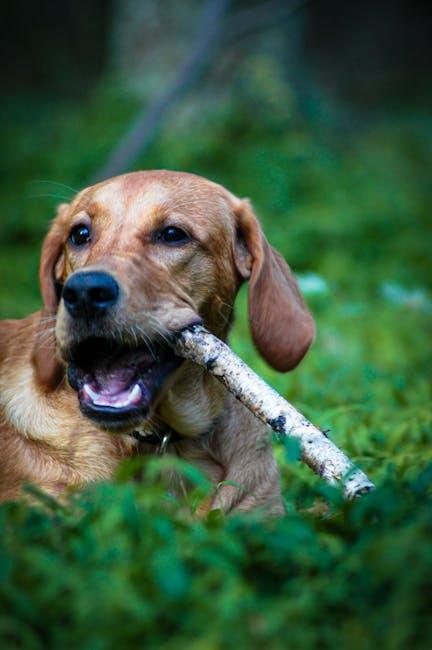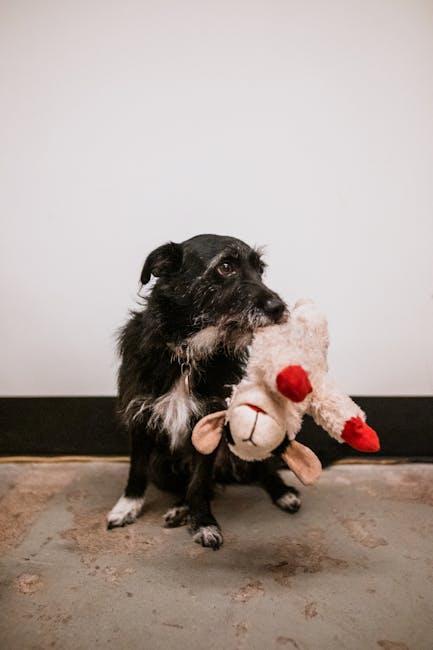Welcoming a furry friend into your home is a joyful experience, but it often comes with its own set of challenges. One common issue many dog owners face is the unsightly and frustrating habit of their beloved pet chewing on furniture. While it’s natural for dogs to chew as a way to explore their environment or soothe their gums, it can lead to damaged furniture and frayed nerves. Fear not, as there are effective and compassionate strategies to guide your canine companion towards more appropriate chewing habits. In this article, we’ll explore practical steps and gentle techniques to help you redirect your dog’s chewing instincts, fostering a harmonious living space for both you and your four-legged family member.
Understanding Why Your Dog Chews: The Root of the Problem
Chewing is a natural behavior for dogs, but when it extends to your beloved furniture, it can become a problem. Understanding the underlying reasons for this behavior is crucial in addressing it effectively. Dogs often chew for a variety of reasons, including:
- Teething: Puppies explore the world with their mouths, and during teething, they chew to relieve discomfort.
- Boredom: Without enough mental or physical stimulation, dogs may chew to entertain themselves.
- Anxiety: Separation anxiety or stress can lead dogs to seek comfort through chewing.
- Instinct: Chewing is a natural instinct that helps keep their jaws strong and teeth clean.
Identifying the root cause of your dog’s chewing behavior is the first step in redirecting it towards more appropriate outlets. By addressing their specific needs, whether it’s through more exercise, interactive toys, or addressing anxiety, you can help protect your furniture and keep your furry friend happy.

Creating a Safe and Engaging Environment for Your Pup
When it comes to ensuring your furry friend feels at home while also keeping your furniture intact, creating a balanced environment is key. A combination of training, enrichment, and supervision can work wonders. Enrichment plays a vital role in curbing destructive behaviors. Consider providing a variety of chew toys that are safe and durable. This not only satisfies their natural urge to chew but also keeps their minds engaged. Interactive toys, like treat-dispensing puzzles, can be particularly effective in distracting your dog from eyeing your favorite couch leg.
- Rotate toys regularly to maintain their interest.
- Ensure your pup gets plenty of physical exercise to expend excess energy.
- Supervise them during the initial stages of training to correct any unwanted behavior promptly.
It’s also crucial to establish clear boundaries. Use positive reinforcement techniques to reward your dog when they choose their toys over your furniture. Consistency is key, so ensure all household members are on the same page with training methods. A warm, loving environment combined with structured guidance will not only keep your furniture safe but also foster a trusting relationship with your beloved canine companion.

Training Techniques to Discourage Unwanted Chewing
- Provide Ample Toys: Introduce a variety of toys that are specifically designed for chewing. These toys can redirect your dog’s natural chewing instincts away from your furniture. Consider rotating them regularly to keep your dog interested.
- Use Taste Deterrents: Apply a safe, bitter-tasting spray on the furniture that your dog tends to chew. These sprays are typically harmless but create an unpleasant taste, discouraging further chewing.
- Positive Reinforcement: Reward your dog with treats and praise when they choose to chew on their toys instead of your furniture. This encourages them to repeat the desired behavior.
- Training Commands: Teach commands like “leave it” or “no” and use them consistently when you catch your dog chewing on furniture. Reinforce these commands with a firm voice, followed by redirecting their attention to an appropriate chew toy.
Interactive Playtime: Engage your dog in regular play sessions to expend their energy. A tired dog is less likely to engage in destructive behaviors like unwanted chewing. Activities such as fetch, tug-of-war, or agility exercises not only reduce boredom but also strengthen your bond.

Choosing the Right Toys to Redirect Your Dogs Chewing
Selecting the appropriate toys for your furry friend can make a significant difference in curbing their destructive chewing habits. When looking for the perfect chew toys, consider options that are durable and enticing to keep your dog engaged. Rubber toys are a popular choice due to their resilience and ability to withstand even the most enthusiastic chewers. Brands like KONG offer hollow toys that can be filled with treats, providing mental stimulation and a rewarding challenge. Rope toys are another excellent option, especially for dogs that enjoy a good tug-of-war game, and they can also help maintain dental health by flossing their teeth as they chew.
To ensure your dog’s safety and continued interest, introduce a variety of textures and sizes. Interactive toys with hidden compartments or puzzles can channel your dog’s curiosity and energy away from your furniture. Natural chews, such as antlers or bully sticks, can also satisfy their instinctual need to gnaw while offering a safe alternative to household items. Remember to supervise your dog with new toys to ensure they are appropriate for your pet’s chewing style and replace them as needed to prevent any potential hazards. By providing these carefully selected alternatives, you can help guide your dog’s chewing behavior in a positive direction.

